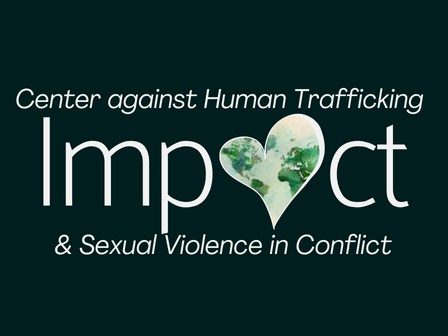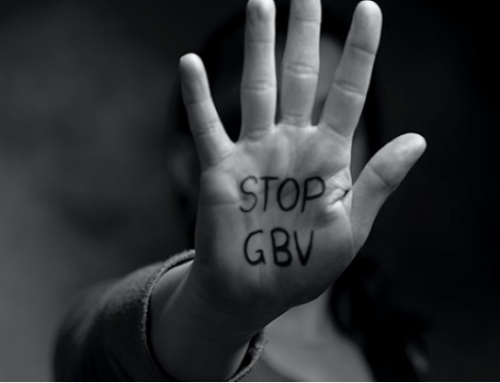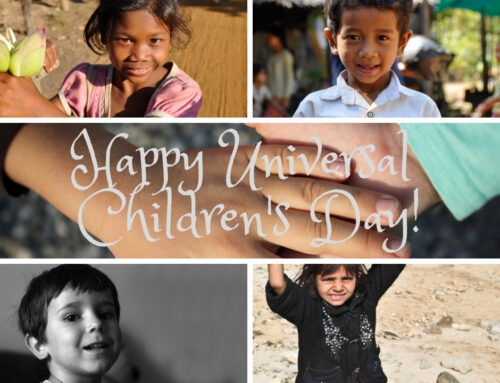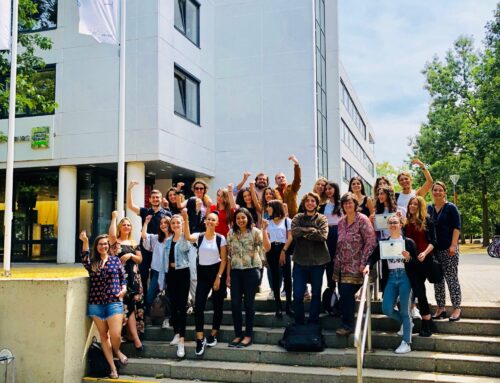Remembering the Victims/Survivors of Conflict-Related Sexual Violence During the Holocaust and Recognizing the Barriers to Obtaining Justice in the Aftermath of the Holocaust
On January 27th, we commemorate the 78th anniversary of the liberation of Auschwitz-Birkenau and the end of the Holocaust. This day is a reminder of the atrocities committed during the Holocaust, and so we must also acknowledge the role that conflict-related sexual violence played. Surviving victims of these crimes often face(d) various barriers in pursuing justice. As we commemorate this significant day, it is important to acknowledge the atrocities that were suffered by the victims/survivors of sexual violence during the Holocaust. Unfortunately, this form of violence is often ignored or dismissed, and so we wish to use this important opportunity to commemorate victims/survivors of conflict-related sexual violence of the Holocaust.
The Widespread Role of Sexual Violence as Part of the Holocaust
This tragic chapter began in 1933 and by 1941-1945, the ‘Final Solution to the Jewish Question’ was implemented on a large scale, across Europe. Multiple minority populations were targeted such as (primarily) the Jewish, Romani, as well as political prisoners. Other vulnerable groups were also targeted, including those who were disabled and homosexual.
The Holocaust is often remembered for its brutal physical violence, such as executions and mass murder via gas chambers. However, among the many crimes that occurred were also the following grave assaults on the reproductive and sexual rights of individuals: rape, forced prostitution in brothels, forced sterilization, forced mutilation, forced nudity, forced insemination and forced abortion, and painful, invasive gynecological examinations.
These assaults were inflicted with unimaginably cruel methods, including, for example, sterilization by castration or severe blunt force trauma on sexual organs of men, women, and children, sometimes including the use of tools such as hot irons or fire. Experimental drugs or treatments using rays were also tested for sterilization, causing physical and mental anguish. Victims were further forced to commit violent sexual acts against their family members or in front of their families, on either living or deceased victims. Despite a known high incidence of sexual violence during the Holocaust, sexual violence was not addressed much until decades later in the 1990s following the conflict in the former Yugoslavia and the genocide against the Tutsi in Rwanda.
The Struggle to Recognize and Prosecute Conflict-Related Sexual Violence
At the Nuremberg Tribunal (1945-1946), where high-level Nazi officials were tried for crimes against humanity, war crimes, and crimes against peace (basically a first in international criminal law), there were several barriers for survivors of conflict-related sexual violence in the search for justice. One important factor was that the (international) laws pertaining to international crimes overall did not include specific sexual violence crimes in their own right.
Although sexual violence was not expressly prosecuted, evidence of sexual violence can be considered to have been subsumed within some of the judgments, for example under the crimes against humanity of “other inhumane acts” and “persecution on political, racial or religious grounds.” Other barriers included discomfort with investigators and prosecutors dealing with these crimes as well as a lack of prosecutor training and expertise in recognizing and understanding the nature and nuances of sexual violence crimes. The presence of women in positions of power within the legal system at the Nuremberg Tribunal was also nihil, arguably further limiting the prosecution of these crimes. Stigma also played a role in the extent to which survivors of these crimes might have felt comfortable discussing the details or impacts of these experiences. These and other factors resulted in the overall bypassing of the prosecution of sexual violence crimes.
It was not until the International Criminal Tribunal for the former Yugoslavia (ICTY) and the International Criminal Tribunal for Rwanda (ICTR) that sexual violence as a war crime, crime against humanity, and genocide was prosecuted for the first time, and survivor’s voices were heard. It was during these tribunals also that the discussion emerged on whether sexual and gender-based crimes, such as genital mutilation and forced nudity, forced pregnancy, and forced abortions, constitute violations of international law.
The ICTY and ICTR may also have been responsible for the heightened interest and recognition of the presence of genocidal sexual violence during the Holocaust. Before these tribunals, sexual violence in war had long been perceived as a byproduct (a booty of war, which soldiers deserved by taking part in the war) rather than as a strategic tool of warfare. However, as International Humanitarian and Criminal Law began to acquire more mechanisms by which these crimes could be better prosecuted (including via the Special Court for Sierra Leone, the Extraordinary Chambers of the Courts of Cambodia, and the International Criminal Court), it became clear that different forms of sexual violence in conflict needed to be recognized as distinct crimes and weapons of war.
Key Message
The Holocaust is remembered for its brutal physical violence, but it is essential to acknowledge that sexual violence played a significant role during this period. These crimes were not widely recognized or prosecuted due to existing perceptions of sexual violence and gender at that time.
Although there has been a marked shift in the recognition and prosecution of sexual violence in conflict through the further shaping of international and national laws, these factors severely limited the extent to which the victims/survivors of these crimes as part of the Holocaust could obtain legal justice or be recognized for their lived experiences. It is therefore that we wish to commemorate the victims/survivors of conflict-related sexual violence in the Holocaust and recognize the continued importance of addressing barriers and stigmas that make it difficult for survivors to come forward.
Kara Liblick
Research intern Impact
Photo description: Candles on the railway tracks leading to Auschwitz during a 60th-anniversary memorial in Poland, 2005.
References
Askin, K. D. (1997). War Crimes Against Women: Prosecution in International War Crimes Tribunals. Martinus Nijhoff Publishers.
De Brouwer, A. M. L. M. (2005). Supranational Criminal Prosecution of Sexual Violence: The ICC and the Practice of the ICTY and the ICTR. Intersentia.
Askin, K. D. (2013). Treatment of Sexual Violence in Armed Conflicts: A Historical Perspective and the Way Forward. In De Brouwer, A. M., Ku, C., Römkens, R., and van den Herik, L., Sexual Violence as an International Crime: Interdisciplinary Approaches (pp. 19-49). Intersentia.
Hedgepeth, Sonja M., and Rochelle G. Saidel, eds., Sexual Violence against Jewish Women during the Holocaust (Brandeis University Press 2010).
Schulz, P., & Kreft, A-K. (2022, February 24). Accountability for Conflict-Related Sexual Violence. Retrieved from https://doi.org/10.1093/acrefore/9780190846626.013.702
O’Mahony, M. (2020, September 22). Women’s Experiences of Genocide. https://www.ushmm.org/genocide-prevention/blog/womens-experiences-of-genocide
United States Holocaust Memorial Museum (n.d.). Women’s History Month. https://www.ushmm.org/information/exhibitions/online-exhibitions/special-focus/womens-history-month






